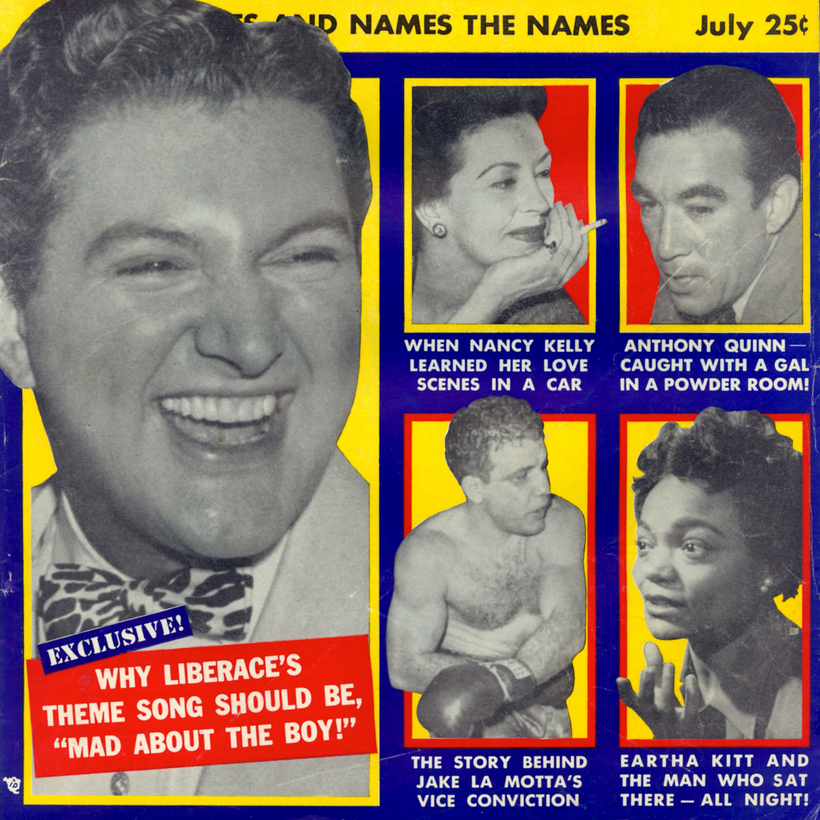During much of the 20th century, journalists and editors of publications both mainstream and marginal faced the challenge of hiding information that they wanted their readers to find.
Social expectations, professional codes, and legal regulations limited how explicitly newspapers and magazines could address a variety of topics, including violence, religion, drug use, and race relations. Publishers wanted to cover these topics because they appealed to readers and sold issues, but doing so could also attract unwanted attention from government censors and libel attorneys—not to mention scandalize polite society.
The most regulated topic was sex. Various publications regarded mentions of pre-marital sex, adultery, abortion, inter-racial relationships, polygamy, polyamory, homosexuality, and even pregnancy as verboten, or, at the very least, undignified. How could newspaper and magazine writers cover such topics while retaining a modicum of deniability?
For many writers, the answer was to rely on subtlety and coded language. The tastiest crumbs I discovered while researching my new book, Gossip Men: J. Edgar Hoover, Joe McCarthy, Roy Cohn, and the Politics of Insinuation, were actually hidden in plain sight. For example, a 1933 issue of Collier’s magazine, a weekly publication whose circulation rivaled that of The Saturday Evening Post, implied that J. Edgar Hoover was gay by referencing his “mincing step” and telling readers he often dressed in lavender, a color then associated with homosexuality.
The challenge of discussing homosexuality without explicitly accusing someone of being homosexual became particularly relevant during the so-called Lavender Scare. In that period, which lasted from the late 1940s until the early 1970s, rampant homophobia led to the dismissal of government employees suspected of harboring “non-normative” sexual tendencies.
A 1933 issue of Collier’s magazine implied that J. Edgar Hoover was gay by referencing his “mincing step” and telling readers he often dressed in lavender.
Mainstream publications might refer to a terminated bureaucrat as a “security risk,” a nod to the widespread canard that homosexuals were susceptible to blackmail. Or they might identify him as a “lifelong bachelor.”
Gossip magazines showed comparatively less restraint but were still hemmed in by the fear of being sued for libel. When Confidential—the best-selling gossip magazine of the early 1950s—learned of an allegation that former Illinois governor and Democratic presidential candidate Adlai Stevenson II was gay, the resulting article never named the rumor. It only noted a scandal that “reflected on the manhood” of Stevenson.
In addition to protecting the magazine from charges of libel, Confidential’s decision to not print the rumor helped promote discussion around the magazine itself, positioning it as “in the know” and suggesting to its audience that they needed to read it in order to keep up with the latest gossip.
The article’s authors adopted a tone of incredulity in discussing the story’s spread: “It was the start of the nastiest, most widely circulated hearsay in the annals of rumor-mongering. By phone, on planes and trains, from the racket of factory assembly-lines to the quiet of hospital rooms, from the big-town sharpies to unsophisticated villages, it burned the ears of a nation.”
Christopher M. Elias’s Gossip Men: J. Edgar Hoover, Joe McCarthy, Roy Cohn, and the Politics of Insinuation is out now from the University of Chicago Press

